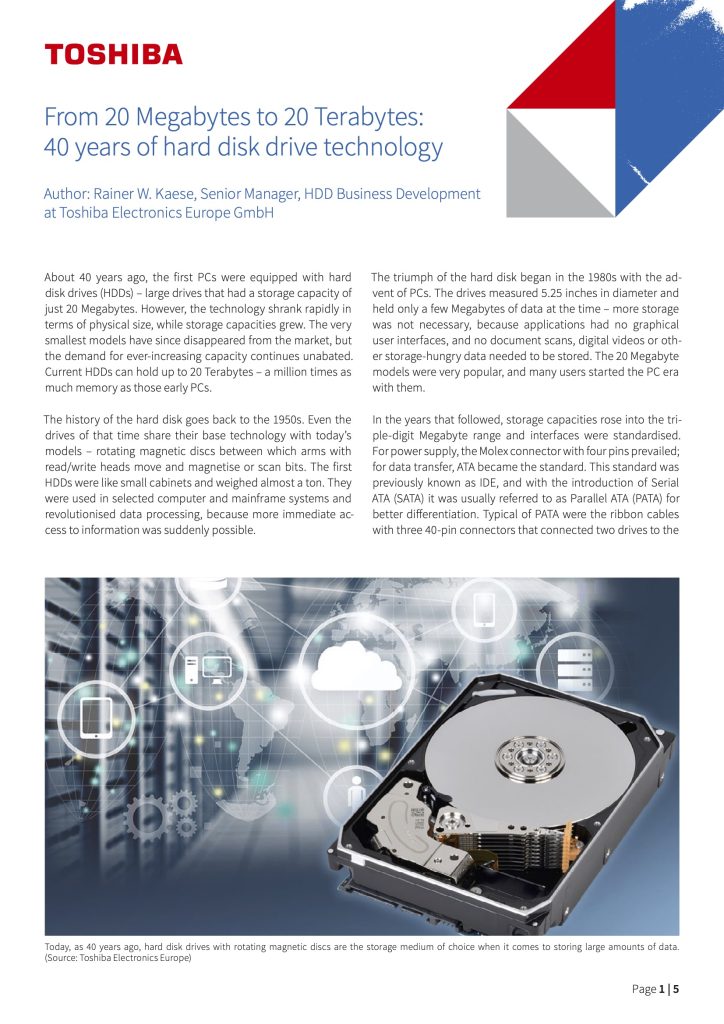From 20 Megabytes to 20 Terabytes: 40 years of hard disk drive technology
About 40 years ago, the first PCs were equipped with hard disk drives (HDDs) – large drives that had a storage capacity of just 20 Megabytes. However, the technology shrank rapidly in terms of physical size, while storage capacities grew. The very smallest models have since disappeared from the market, but the demand for ever-increasing capacity continues unabated. Current HDDs can hold up to 20 Terabytes – a million times as much memory as those early PCs.
The history of the hard disk goes back to the 1950s. Even the drives of that time share their base technology with today’s models – rotating magnetic discs between which arms with read/write heads move and magnetise or scan bits. The first HDDs were like small cabinets and weighed almost a ton. They were used in selected computer and mainframe systems and revolutionised data processing, because more immediate ac- cess to information was suddenly possible.
The triumph of the hard disk began in the 1980s with the ad- vent of PCs. The drives measured 5.25 inches in diameter and held only a few Megabytes of data at the time – more storage was not necessary, because applications had no graphical user interfaces, and no document scans, digital videos or oth- er storage-hungry data needed to be stored. The 20 Megabyte models were very popular, and many users started the PC era with them.
In the years that followed, storage capacities rose into the tri- ple-digit Megabyte range and interfaces were standardised. For power supply, the Molex connector with four pins prevailed; for data transfer, ATA became the standard. This standard was previously known as IDE, and with the introduction of Serial ATA (SATA) it was usually referred to as Parallel ATA (PATA) for better differentiation.
Download the whole article here.
Author: Rainer W. Kaese, Senior Manager, HDD Business Development at Toshiba Electronics Europe GmbH


